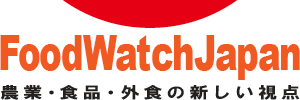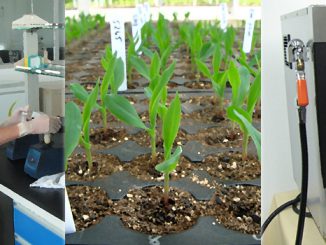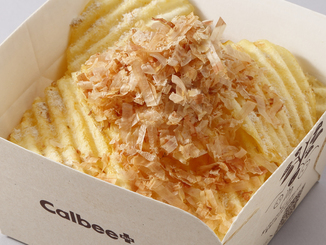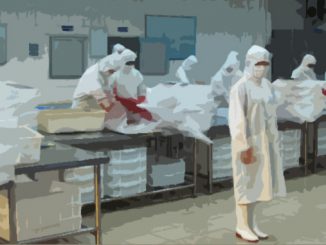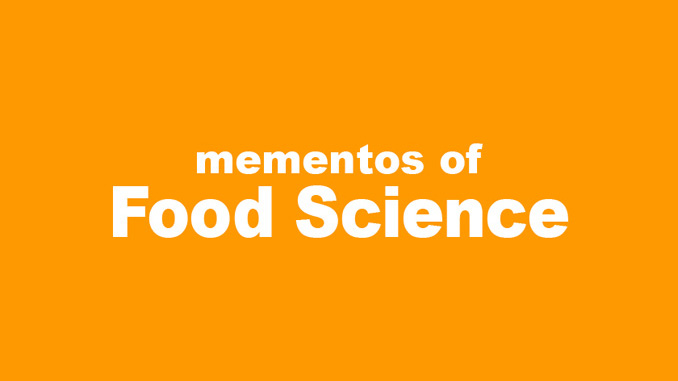
韓国のでんぷんメーカー数社は近頃、非バイテク・トウモロコシの価格高騰を受けて初めてバイテク・トウモロコシの購入を決定した。韓国においてバイテク・トウモロコシがコーンシロップやブドウ糖といった食品の原料として使われるのはこれが初めてである。現在、韓国、そして日本でもまた、バイテク・トウモロコシは主に家畜の飼料として使われている。日本でのバイテク作物の食用としての利用は、醤油やナタネ油といった加工度の高い食品に限られているようだ。一方、米国ではバイテク・トウモロコシやダイズの大規模商業生産は、1997年に始まった。米国の食品産業はそれ以来、それら作物の副産物を多くのパック詰め食品に利用している。バイテク・パパイヤは、ハワイのパパイヤ産業を救った。米国では一部の圧力団体がバイテク食品に反対したが、米国人は一般的に、農業や食品製造での先端バイオ技術を受容している。さて、日本においてバイテク食品が常に抵抗を受けてきたかと言えば、決してそういうわけではない。なぜ消費者の認識は変わってしまったのか。
Starch manufacturers in Korea recently agreed to buy biotech corn for the first time in response to price increases for non-biotech corn. This is the first time in Korea that biotech corn will be used to produce food ingredients such as corn syrup and dextrose. Currently, in Korea, and in Japan as well, biotech corn has been used mainly for feed for animals. In Japan biotech crops are only used to produce highly processed food ingredients such as soy sauce and canola oil. In contrast, the first large scale commercial production of biotech corn and soybean in the U.S. began in 1997. The U.S. food industry has used by-products of biotech corn and soybean in many pre-packaged foods ever since. Biotech papaya saved the Hawaiian papaya industry. While certain advocacy groups opposed the use of biotech foods in the U.S., Americans generally have accepted modern biotechnology in agriculture and food production. Resistance to biotech foods was not always the norm in Japan. Why did consumer perceptions change?
遺伝子工学についての国民的論議の歴史は長い。70年代初頭、ノーベル賞受賞者のPaul Berg博士を始めとする遺伝子工学技術を開発した科学者たちは、この技術の安全な用途について問題を提起した。彼らの懸案事項は、ある遺伝子が新しい宿主において期待通りに働くかどうか、遺伝子導入によって新種の危険な病原体が意図せずもたらされるのではないかということに集中していた。米国立衛生研究所(NIH)の組み換DNA諮問委員会(RAC)が、慎重を期した科学的調査と審議のもと、これら懸念について答えている。遺伝子工学は、しかるべき科学的指針のもとに安全に利用され得ると。しかし、圧力団体はその議論を農業や食品生産に広げていったのだ。
遺伝子工学が初めて商業利用されたのは83年、糖尿病の治療薬であるヒト・インスリンが大腸菌の醗酵によって生産されたことによる。社会から何の懸念も表明されなかった。ほどなく、心臓発作を起こした患者の治療に使われるTPAやB型肝炎ワクチンなどのバイテク医薬品が次々と生産されていった。米国食品医薬品局(FDA)は、これら医薬品を科学的に審査することによって貴重な経験を積んだ。遺伝子工学の食品利用に関する問い合わせがFDAに寄せられる数年前のことである。
80年代後半、コーンシロップなどの食品を生産するための醗酵微生物株の改良に遺伝子工学が利用された。かつてはレンネットと呼ばれていたキモシンは、子牛の胃にあってミルクを凝固させチーズを作る酵素である。その遺伝子を大腸菌に導入し、醗酵によってキモシンが作られる。90年、キモシンは、FDAが商業利用を認可した最初のバイテク食品用酵素となった。FDAに、世間から何のコメントも寄せられることはなかった。概して、米国、日本あるいは欧州においても、醗酵において遺伝子工学が利用されることについては世の中の論争になったことはない。
農業バイオテクノロジーは、80年代初頭に始まった。Marc van MontagueとJozef Schell両博士率いる少数の科学者グループが作物に遺伝子を導入する実験を行ったのが最初である。その後98年には、この研究に対して彼らに栄誉ある日本国際賞が贈られた。しかし、農業バイオテクノロジーは、主に環境圧力団体によって始められた長い論争へと向かって行くことになる。その結果、多くの政府が特定の法律や規則また認可過程を制定した。いくつかのケースでは、公衆衛生に対する真のリスクとは何かを国民に伝えることを目的とせず、国民の懸念を軽減することを狙って制定されたようなものもある。
今日、70種類以上もの組換え作物が、米国や日本を含む諸外国で、食用または飼料用として認可されている。しかし、日本の食料品店で、バイテク食品を見ることは実質ほとんどない。食品企業は国民のネガテブな反応を恐れ、バイテク食品の利用に踏み切れないでいる。東京滞在1年目、多くの人々がバイオテクノロジーや遺伝子工学についてよく知っているので驚いた。コーヒーショップや理髪店でも話題に上る。驚くまでもなく、ほとんどの人々が、バイテク食品に対して抵抗を示す。とは言っても、バイオテクノロジーに対する日本の世論の風潮は、いつもそうであった訳ではなかった。
80年代から90年代初頭にかけて日本政府は、NIHやOECDのガイドラインをモデルにして醗酵における遺伝子工学の利用について独自のガイドラインを作成した。英国では、バイテク・トマトペーストの売れ行きは既存のものに比べ好調であった。そして、その英国で牛海綿状脳症(BSE)が発生した。そのほかにも食品関連の事件が欧州や日本で相次いだ。病原性大腸菌O157-H7がそのいい例である。このようなことから国民の政府への信頼が揺らいでいった。こういった中で、反バイテク団体が世論に強い影響を与えていったのだ。
時間はかかるが、国民の信頼を回復することが不可欠である。日本政府は03年に食品安全関連官庁を再編し、厚生労働省や農林水産省に客観的な科学的リスク評価を提供する役割を担う食品安全委員会が設立された。厳しいバイテク規制制度が実施されているにもかかわらず、バイテク食品に対する日本の国民感情は日本が有するその技術に比べ相当立ち遅れている。それが言い過ぎだとするなら、少なくとも、その大半は否定的なものである。比較的安価な食品が十分にある時代においては、そういった意識はまず変わることはないのであろう。
日本の国内で消費される食料のおよそ60%(カロリーベース)が輸入食品である。そこには、米国から輸入された大量のトウモロコシやダイズ、そのほか農産物が含まれている。バイテク作物の生産が始まってからここ10年間は、日本の企業はバイテク・トウモロコシの輸入を家畜の飼料用に限ってきた。最近の食料と燃料価格の劇的な変化によって、企業はより安価な食品原料資源の模索に追われている。
韓国企業と同様に日本企業も、バイテク・トウモロコシを視野に入れ始めたようだ。日本政府は、食品安全における国民の信頼を高めるべく取り組みを行っている。バイオテクノロジーに対する国民の理解向上のためリスクコミュニケーション会議を頻繁に開催している。日本人のバイテク食品に対する認識が変わるかどうかは、政府に対する国民の信頼回復が決め手となるだろう。市場における受容度の高まりがそれを後押ししてくれるかもしれない。
*本稿で表記するバイテクは、遺伝子組換えを意味するものとする(FoodScience編集部)
The public debate on genetic engineering has a long history. In the early 1970s scientists who developed these methods including Nobel Prize winner, Dr. Paul Berg, raised questions about the safe use of genetic engineering. Their concerns focused on whether a gene would function as expected in a new host and whether new, dangerous pathogens might be an unintended consequence of gene transfer. Careful scientific research and deliberations by the U.S. National Institutes of Health (NIH) “Recombinant DNA Advisory Committee” answered these questions. Genetic engineering could be used safely under appropriate scientific guidelines. However, advocacy groups broadened the debate to agriculture and food production.
The first commercial application of genetic engineering was the production via fermentation in E. coli of human insulin in 1983, the drug used to treat diabetes. No concerns were voiced by the public, and other biotech drugs followed shortly after including TPA, used for treating patients following a heart attack, and hepatitis B vaccine. The FDA gained valuable experience from the scientific review of these drugs several years before questions regarding the use of genetic engineering in foods reached the FDA.
In the late 1980s, genetic engineering was applied to improve microbial fermentation strains to produce corn syrup and other food substances. Chymosin, formerly called rennet, is the enzyme in the calf stomach that clots milk to make cheese. The gene was introduced into E. coli, and chymosin was produced via fermentation. In 1990, this was the first biotech food enzyme that FDA allowed for commercial use. FDA received no comments from the public. Generally, there has been no public controversy regarding the use of genetic engineering in fermentation in the U.S., Japan, or Europe.
Agricultural biotechnology began in the early 1980s when a small group of scientists led by Professor Marc van Montague and Dr. Jozef Schell performed the first gene transfer experiments in crops; work for which they were awarded the prestigious Japan Prize in 1998. However, agricultural biotechnology was headed for a long debate, initiated primarily by environmental advocacy groups. Consequently, many governments enacted specific laws, regulations, and approval processes, in some cases as much to reduce public concern as to address real risks to public health.
Today, over seventy varieties of genetically engineered crops have been approved for food and or feed use in the U.S. and other countries, including Japan. However, it is virtually impossible to find biotech foods in Japanese grocery stores. Food companies are fearful of adverse public response to the use of biotech foods. During my first year in Tokyo, I was surprised to find that many people were familiar with biotechnology and genetic engineering, even in coffee shops and barber shops. Not surprisingly, most people also expressed a reluctance to use biotech foods. Public concern in Japan about biotechnology was not always the case.
The Japanese government developed guidelines in the 1980s and early 1990s for the use of genetic engineering in fermentation modeled on the U.S. NIH and OECD (Organization of Economic Cooperation and Development) guidelines. In the U.K., biotech tomato paste was marketed successfully compared to its conventional counterpart. Then the outbreak of BSE occurred in the U.K. Other food related episodes also occurred in Europe and in Japan (E. coli 0157-H7). These and other health related events can result in reduced public confidence in government. In such a climate, anti-biotech groups are able to sway public opinion.
Regaining public trust is crucial but takes time. The Japanese government restructured its food safety authorities in 2003 by establishing the Food Safety Commission, charged with providing objective scientific risk assessments to MHLW and MAFF. In spite of having a rigorous biotech regulatory system in place, Japanese sentiments about biotech foods still lag behind the technology, or at least are perceived to be largely negative. In times of adequate, relatively inexpensive food, there is little incentive to change attitudes.
Japan is dependent upon imported food ? about 60 percent of food is imported ? including large amounts of corn, soybean and other agricultural products from the U.S. During the first decade of production of biotech crops, Japanese firms have limited the use of imported biotech corn for feed for animals.
The recent dramatic changes in food and fuel prices may cause Japanese firms, like Korean firms, to seek cheaper sources of raw materials, including biotech corn. The Japan government has taken important steps to enhance public confidence in food safety decisions and is also conducting outreach meetings to improve public understanding of biotechnology. Confidence in government decisions coupled with increased experience in the market place will determine whether there will be a change in Japanese perceptions of biotech foods.
※このコラムは「FoodScience」(日経BP社)で発表され、同サイト閉鎖後に筆者の了解を得て「FoodWatchJapan」で無償公開しているものです。
